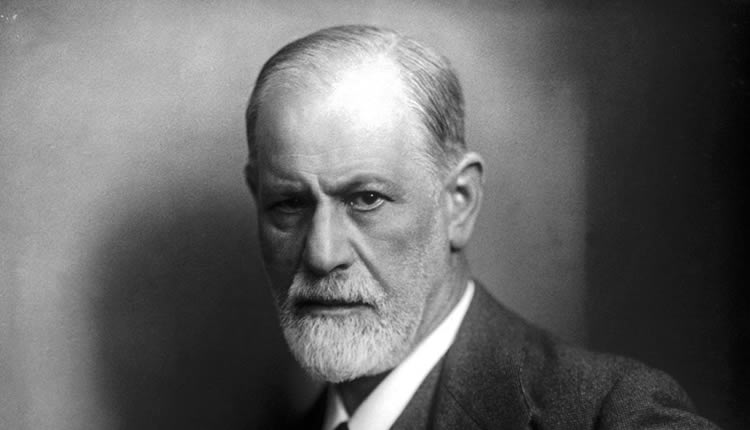What Freud Can Teach Us About Neuromarketing

Sigmund Freud, the Austrian neurologist and founder of psychoanalysis, would likely have something to say about neuromarketing. Freud’s theories have fallen out of favor with many academics and therapists. But, his practices and ideas can still form useful metaphors that help us understand how to connect with our customers.
Here’s how we can interpret Freud’s theories and apply them to marketing best practices today…
Encouraging people to talk freely
Freud was the father of psychoanalysis, also known as ‘the talking cure’. During psychoanalysis, patients would lie on a couch and talk freely about their thoughts. In doing so, Freud hoped to uncover the underlying reasons for their symptoms.
Indeed, some neuromarketing firms like Olson Zaltman still use in-depth interviews. While not therapeutic, they can be lengthy and are designed to identify underlying emotions and associations.
As business owners, one of our primary aims is to get customers talking about our products. Even today, word of mouth remains 92% more effective than all other forms of advertising. We want our customers to be engaging with us. We want them taking photos and videos, sharing on social networks, and recommending the brand to family and friends.
In other words, we must encourage people to talk freely, just as Freud did. Building customer reviews and forum functionality into your website is one way. Another is to be active on social media. This provides a space for visitors to interact with your brand (and each other).
Give your followers the right cues and incentives to get them to open up, and you will likely find not only positive responses but also areas for improvement.
Tapping into the unconscious mind
Freud would often use the analogy of an iceberg when it came to describing the unconscious mind. On the surface, you have the tip of the iceberg – or consciousness. But, the largest and most significant part is below the surface – the unconscious. According to Freud, the most important part of the mind is the part we cannot see.

In the early days of neuromarketing, nearly everyone included an iceberg image in their presentations or marketing. In more recent years, the iceberg metaphor has become a cliche. (Roger Dooley pointed this out in his “Obligatory Iceberg” slide, circa 2013.)
Freudian theory assumes the unconscious mind governs our behavior, probably more than people imagine. It’s not surprising that advertising strategies often appeal to both the conscious and the unconscious mind. There are all sorts of psychological triggers that influence where and how we choose to spend our money.
So perhaps Freud was onto something here. According to some scientists, 95% of our day-to-day decisions are made by the unconscious mind. Package design and store environment, color and tone of voice, and many other factors affect our non-conscious mind. This impacts how we feel about a brand and its products.
95% of our day-to-day decisions are made by the unconscious mind. #psychology #Neuromarketing Share on XFreud and your customers’ psyche
Later in his career, Freud came up with a structural model of the human mind. He proposed three distinct entities: the id, the ego, and the superego.
The first entity, the id, is present from birth. The id forms our most basic instincts, driving our need for pleasure and gratification. As we move past infancy, the ego develops. It teaches us to satisfy the demands of the id in a socially acceptable manner. Finally, the superego evolves, bringing with it our sense of morality.
It is widely acknowledged that to sell to the ego, you have to talk to the id. The best sales copywriters know this, and always write to the ids of their audience. They try to appeal to primitive drives, whether that’s seeking pleasure or avoiding pain.
Edward Bernays, hailed in his obituary as “the father of public relations”, was one of the first to take Freud’s ideas and apply them to consumer marketing. Bernays, Freud’s nephew, became famous for his ability to manipulate the minds of American consumers.
Greed and sexuality
Freud believed that humans are intrinsically greedy. He noted that people could always justify their decisions – however ludicrous – with their own reasoning. In cognitive science, this is known as ‘post-purchase rationalization’. As humans, we tend to retrospectively ascribe positive attributes to our choices.
To some extent, consuming products allows us to fill an empty space, at least for a time. And so, we often make impulse purchases driven (at least in part) by our subconscious.
Likewise, Freud also had a lot to say about our psychosexual lives. And it’s not altogether surprising to note that advertising often uses sexually charged imagery and language to drive its audience to make a purchase – because it (usually) sells. (Whether or not sexual imagery or content is appropriate in a given situation is a different topic.)
Freud and research bias
Finally, let’s consider how Freud himself conducted his research. There’s a reason many of his theories have since fallen out of favor.
First, Freud would often base his conclusions on an unrepresentative sample of the population. His subjects were mostly his patients, one child, and himself. Therefore, his findings do not necessarily apply to a wider demographic.
The second is that he was known for showing research bias. Freud sometimes paid attention to evidence that supported his theories and dismissed less supportive data. This is not uncommon, even for scientists. Freud certainly won’t have been the first (or last) academic to allow cognitive bias to skew findings.
But, false beliefs can do us harm when it comes to marketing. Say you’re undertaking market research. If your data isn’t accurate, then you’re not going to take the most appropriate action for your business. Even good data can be abused by acting on findings you agree with while rejecting contrary data.
Cognitive bias can affect all of us, almost always without our realizing it. It can be an issue of framing, social standing, feeling more comfortable with familiar options, or many more cognitive biases. Hence, it’s especially important to make business decisions – and customer research – with an open mind.
While we may not want to rely on Freud’s findings too heavily, we can still draw useful parallels. Whether that’s taking a more id-focused approach to content, being aware of the power of the unconscious to influence decision-making, or ensuring truly representative research, we can all do something to connect with our customers on a deeper level.
What Freud Can Teach Us About #Neuromarketing. #psychology Share on X Victoria Greene: E-commerce Consultant & Marketer
Victoria Greene: E-commerce Consultant & Marketer
I love discovering what drives customers to make purchases. From content and branding to web design and social advertising, we all have much to learn about what the future of selling online will look like – and those with a firm understanding of neuromarketing will undoubtedly benefit.
